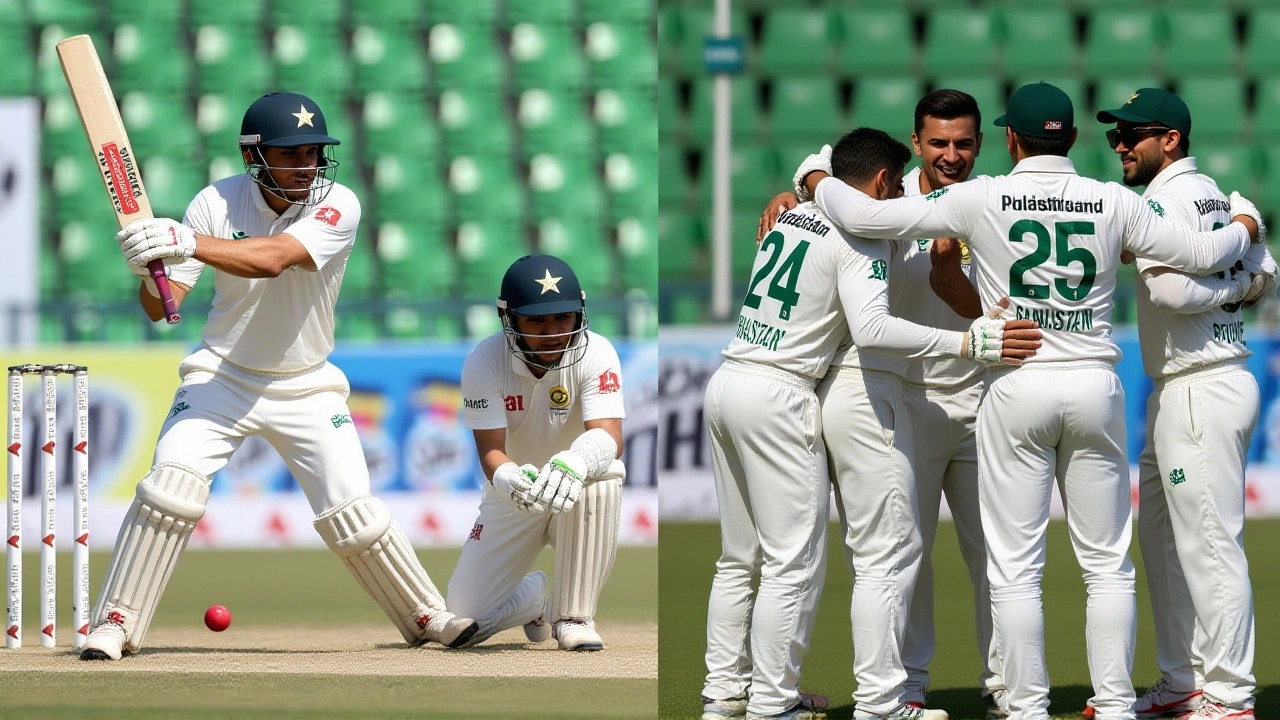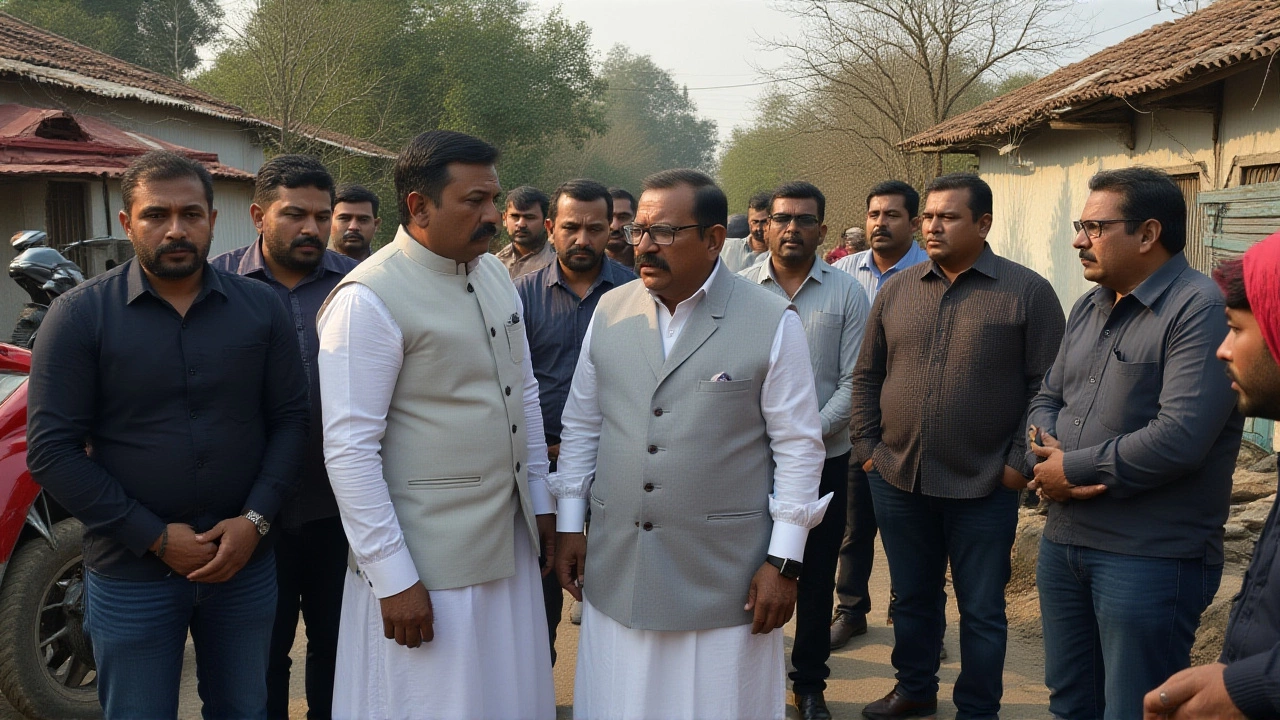Kagiso Rabada’s 71 Shatters South African Record as No. 11 Batter Against Pakistan in Rawalpindi
-
Nov, 23 2025
-
0 Comments

When Kagiso Rabada walked to the crease on Day 3 of the second Test in Rawalpindi Cricket Stadium on October 22, 2025, South Africa was in deep trouble. Trailing by 27 runs, with two wickets down and the tail exposed, the visitors looked set to surrender the initiative. Then came the unexpected: a 30-year-old fast bowler, known for his yorkers and bouncers, turned into a batsman who refused to yield. Rabada’s 71 not only became the highest score by a No. 11 batter in South African Test history—it came within 27 runs of Ashton Agar’s all-time record and redefined what’s possible from the bottom of the order.
A Bowler’s Miracle in Rawalpindi
Rabada, born May 25, 1995, in Mthatha, Eastern Cape, had never scored more than 30 in a Test innings before. His previous 54 Tests had been defined by pace, swing, and aggression with the ball—not the bat. But on this sweltering afternoon in Rawalpindi, he played like a man possessed. Facing a Pakistan attack that included debutant Asif Afridi (who became the oldest player ever to take a five-wicket haul on debut, finishing with 6 for 79) and left-arm pacer Shaheen Shah Afridi, Rabada didn’t just survive—he dominated. He cleared the ropes four times, each six a statement. One against Shaheen, a brutal pull over long-on, drew gasps from the crowd. Another, a driving stroke through the covers off the same bowler, looked like something from a top-order specialist. His 71 came with eight boundaries in total—four fours, four sixes—and lasted just under three hours. When he was finally caught at long-on attempting another big shot off Asif Afridi in the 120th over, the stadium fell silent. Not out of disappointment, but awe.The Partnership That Changed Everything
Rabada didn’t do it alone. He was joined by Senuran Muthusamy, the unheralded No. 10, who held firm with gritty determination. Together, they added 98 runs for the last wicket—the highest partnership for the 10th wicket by South Africa in Test cricket against Pakistan. Before they walked out, South Africa’s first innings stood at 200 for 9. When they were separated, it had climbed to 298. That 71-run lead was the difference between a potential collapse and a commanding position. It wasn’t just about runs. It was about momentum. Pakistan had dominated the first two days. Noman Ali had taken four wickets in the first Test on October 13. Asif Afridi, at 34, had been a last-minute call-up after injury concerns. Yet, Rabada and Muthusamy turned the tide. "They made Pakistan toil," wrote India Today. And they did—so much so that the hosts’ bowling attack, once so confident, looked drained by the end.A Historic Moment in a Historic Series
This wasn’t just a record-breaking innings. It was a landmark in a series steeped in symbolism. South Africa’s visit to Pakistan in 2025 was their first Test tour since 2007—two decades of security concerns, political tensions, and canceled fixtures. For many players, this was their first experience of Pakistani crowds, Pakistani pitches, Pakistani pressure. Rabada’s innings became more than a personal milestone—it became a symbol of resilience. His 71 is now the second-highest score by a No. 11 in Test history, behind only Australia’s Ashton Agar, who scored 98 against England at Trent Bridge in 2013. Rabada’s knock is the highest by a bowler in Test cricket since Agar’s. It’s also the first time a South African No. 11 has passed 50. And it came in a match where none of Pakistan’s top seven batters managed more than 40 in their first innings.
What This Means for South Africa
South Africa’s captain, Temba Bavuma, called Rabada’s performance "unbelievable but not surprising." He’s known in the dressing room for his fearless attitude in the nets. Head coach Rob Walter and bowling coach Charl Langeveldt have long encouraged their bowlers to think like all-rounders. This innings proved the philosophy works. For Rabada, it’s a career-defining moment—not because he’s suddenly a batsman, but because he showed that elite athletes can defy roles. In an era where specialization dominates, he reminded everyone that cricket still rewards adaptability.What’s Next?
The third Test begins in Lahore on October 30, with South Africa leading the series 1-0 after a draw in the first match. Pakistan will need to respond with both bat and ball. But the psychological edge has shifted. Rabada’s 71 has given South Africa belief. And for Pakistan, the question now isn’t just how to win—it’s how to recover from the shock of seeing their own bowlers, including the record-setting Asif Afridi, get punished by the last man standing.
Behind the Numbers
- Rabada’s 71 is the highest Test score by a No. 11 for South Africa
- He broke his previous highest score of 30
- His 98-run partnership with Muthusamy is the highest 10th-wicket stand for South Africa vs Pakistan
- Asif Afridi’s 6 for 79 is the best bowling figures by a debutant over age 34 in Test history
- South Africa’s 298 was their highest total in Pakistan since 2007
Frequently Asked Questions
How does Rabada’s 71 compare to other No. 11 scores in Test history?
Rabada’s 71 is the second-highest score by a No. 11 batter in Test cricket, trailing only Ashton Agar’s 98 for Australia against England in 2013. It’s the highest by a bowler since then and the first time a South African No. 11 has passed 50. Only five No. 11s have ever scored 70 or more in Tests, making Rabada’s innings part of an elite club.
Why is this innings so significant for South African cricket?
South Africa hadn’t toured Pakistan for Test cricket since 2007 due to security concerns. This series marks a major return, and Rabada’s performance—coming from the lowest order—gave the team a psychological edge in hostile conditions. It also signaled a shift in how South Africa values all-round contribution, especially from bowlers who can bat.
Who is Asif Afridi, and why was his performance notable?
Asif Afridi, 34, made his Test debut on October 22, 2025, and took 6 for 79—the best figures by any debutant over the age of 34 in Test history. He’s the oldest player ever to claim a five-wicket haul on debut. His performance was a major story until Rabada’s innings stole the spotlight, highlighting the unpredictability of the match.
Did Rabada’s innings affect the outcome of the match?
Absolutely. South Africa’s first innings total of 298 gave them a 71-run lead, which proved decisive. Pakistan’s top order collapsed in their second innings, and South Africa went on to win the match by 8 wickets. Rabada’s knock turned a likely draw into a victory, giving them a 1-0 lead in the series.
Is this a sign that bowlers should start batting more aggressively in Tests?
It’s a reminder that the bottom of the order can be a weapon, not just a liability. South Africa’s coaching staff have long encouraged bowlers to train as finishers. Rabada’s innings proves that when a bowler has the mindset—and the skill—there’s no reason why they can’t contribute crucial runs. Expect more teams to follow suit.
What’s the historical context of South Africa’s return to Pakistan?
South Africa last toured Pakistan for Tests in 2007. After the 2009 terrorist attack on the Sri Lankan team, international cricket was suspended in Pakistan for nearly a decade. This 2025 series is the first full Test tour since then, symbolizing a major step in cricket’s recovery and diplomatic normalization. Rabada’s record-breaking innings now stands as one of the defining moments of that return.